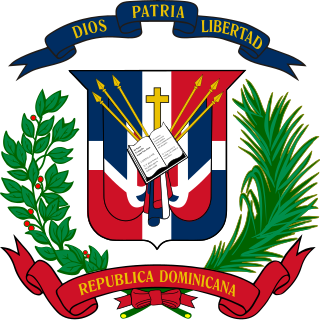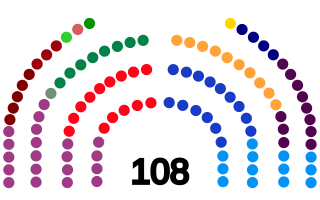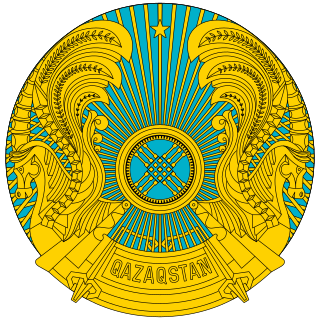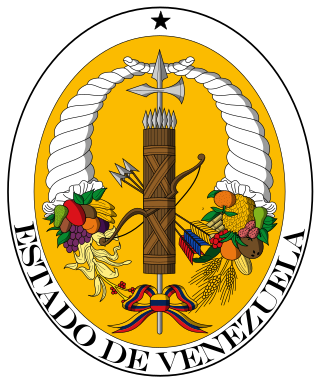
A senate is a deliberative assembly, often the upper house or chamber of a bicameral legislature. The name comes from the ancient Roman Senate, so-called as an assembly of the senior and therefore considered wiser and more experienced members of the society or ruling class. However the Roman Senate was not the ancestor or predecessor of modern parliamentarism in any sense, because the Roman senate was not a de jure legislative body.

The Dominican Republic is a representative democracy, where the President of the Dominican Republic functions as both the head of the government and head of the multi-party system. Executive power is exercised by the government. Legislative power is vested in the bicameral National Congress. The Judiciary is independent of the executive and the legislature.
Tricameralism is the practice of having three legislative or parliamentary chambers. It is contrasted with unicameralism and bicameralism, either of which is far more common.

The president of the Dominican Republic is both the head of state and head of government of the Dominican Republic. The presidential system was established in 1844, following the proclamation of the republic during the Dominican War of Independence. The president of the Dominican Republic is styled Your Excellency, Mr. President during his time in office. His official residence is the National Palace.

The Congress of the Republic of Colombia is the name given to Colombia's bicameral national legislature.

The Congress of the Dominican Republic is the bicameral legislature of the government of the Dominican Republic, consisting of two houses, the Senate and the Chamber of Deputies. Both senators and deputies are chosen through direct election. There are no term limits for either chamber.

The Chamber of Deputies is the Lower house of the Congress which, along with the Senate, composes the legislature of the Dominican Republic.

The Senate of the Dominican Republic is the upper house in the bicameral legislature of the Dominican Republic, and together with the Chamber of Deputies makes up the Congress.

The Dominican Republic is divided into thirty-one provincias, while the national capital, Santo Domingo, is contained within its own Distrito Nacional.

The Federal Parliament is the bicameral parliament of Belgium. It consists of the Chamber of Representatives and the Senate. It sits in the Palace of the Nation. The Chamber of Representatives is the primary legislative body; the Senate functions only as a meeting place of the federal communities and regions.

The Supreme Court of Ukraine is the highest judicial body in the system of courts of general jurisdiction in Ukraine.

The Italian Parliament is the national parliament of the Italian Republic. It is the representative body of Italian citizens and is the successor to the Parliament of the Kingdom of Sardinia (1848–1861), the Parliament of the Kingdom of Italy (1861–1943), the transitional National Council (1945–1946) and the Constituent Assembly (1946–1948). It is a bicameral legislature with 600 elected members and a small number of unelected members. The Italian Parliament is composed of the Chamber of Deputies, as well as the Senate of the Republic.

The Senate of Kazakhstan is the upper house of two chambers in Kazakhstan's legislature, known as the Parliament (Parlamenti). The Senate is composed of elected members: two from each region and two from three municipalities which are Almaty, Astana, and Shymkent.

The Council of State is the Supreme Administrative Court of Greece.

Tomás Bobadilla y Briones was a writer, intellectual and politician from the Dominican Republic. The first ruler of the Dominican Republic, he had a significant participation in the movement for Dominican independence.

The Supreme Court of the Dominican Republic is the highest court existing in the Republic and is, therefore, the head of the judiciary in the country.

The National Council of the Magistracy is the Dominican constitutional body responsible for appointing judges of the Supreme Court, the Constitutional Court and the Superior Electoral Court of the Dominican Republic.

The history of the Costa Rican legislature is long and starts from even before its formal independence from the Spanish Empire. Costa Rica is one of the world's oldest democracies, thus, its parliamentary history dates back several centuries.
Dominican Republic nationality law is regulated by the 2015 Constitution, Law 1683 of 1948, the 2014 Naturalization Law #169-14, and relevant treaties to which the Dominican Republic is a signatory. These laws determine who is, or is eligible to be, a citizen of the Dominican Republic. The legal means to acquire nationality and formal membership in a nation differ from the relationship of rights and obligations between a national and the nation, known as citizenship. Nationality in the Dominican Republic is typically obtained either on the principle of jus soli, i.e. by birth in the Dominican Republic; or under the rules of jus sanguinis, i.e. by birth abroad to a parent with Dominican nationality. It can also be granted to a permanent resident who has lived in the country for a given period of time through naturalization or for a foreigner who has provided exceptional service to the nation.

The Constitution of Venezuela of 1830 was the fourth Magna Carta in force in Venezuela from 1830 to 1857, being the second most valid Venezuelan fundamental law. Approved by the Constituent Congress of Valencia, on September 22, 1830 and promulgated by General José Antonio Páez two days later. The Constituent Congress of 1830 that sanctioned it had begun its sessions in the city of Valencia on May 6, 1830, with the attendance of 33 deputies of the 48 that had been elected in representation of the provinces of Cumaná, Barcelona, Margarita, Caracas, Carabobo, Coro, Mérida, Barinas, Apure, Barquisimeto, Guayana and Maracaibo. In March 1857 this text was repealed when the Constitution of 1857 was approved and promulgated.













